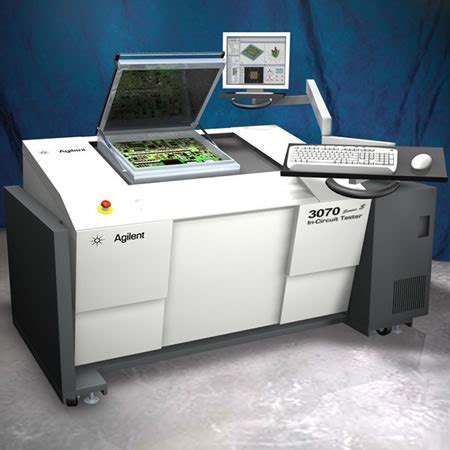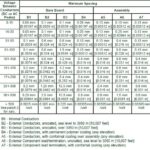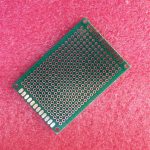What is In-Circuit Testing (ICT)?
In-Circuit Testing (ICT) is an automated testing method that verifies the functionality of individual components on a PCB by directly probing their connections. ICT is performed using specialized equipment called an ICT fixture, which consists of a bed of nails that makes contact with specific points on the PCB. The fixture is connected to a computer-controlled testing system that applies electrical signals to the components and measures their responses.
ICT is capable of detecting various types of faults, including:
- Short circuits
- Open circuits
- Incorrect component values
- Missing components
- Incorrect component orientation
- Faulty solder joints
By identifying these issues early in the manufacturing process, ICT helps to reduce rework costs and improve overall product quality.
Benefits of In-Circuit Testing
Incorporating ICT into the PCB assembly process offers several benefits:
-
Early Fault Detection: ICT allows for the identification of faults at an early stage, before the PCB is assembled into the final product. This early detection reduces the cost and time associated with rework and repairs.
-
Comprehensive Testing: ICT provides a thorough testing of individual components, ensuring that each component functions as intended. This comprehensive testing helps to identify issues that may not be detected by other testing methods.
-
Automation: ICT is an automated process, which means that it can be performed quickly and efficiently. This automation reduces the time required for testing and increases the overall throughput of the manufacturing process.
-
Improved Quality: By detecting and addressing faults early in the manufacturing process, ICT contributes to the overall quality of the final product. This improved quality translates to higher customer satisfaction and reduced warranty claims.
-
Cost Savings: Although implementing ICT requires an initial investment in equipment and fixtures, it ultimately leads to cost savings by reducing rework, minimizing scrap, and improving production efficiency.
PCB Assembly Service Providers with ICT Capabilities
Several PCB assembly service providers offer ICT as part of their manufacturing process. Here are some notable companies that provide ICT services:
-
Sunstone Circuits: Sunstone Circuits is a leading PCB manufacturer based in the United States. They offer a range of PCB assembly services, including ICT. Sunstone Circuits has invested in state-of-the-art ICT equipment and has a team of experienced technicians who specialize in ICT testing.
-
PCBGOGO: PCBGOGO is a China-based PCB assembly service provider that offers ICT as part of their quality assurance process. They have a dedicated ICT testing department equipped with advanced testing equipment and staffed by skilled professionals. PCBGOGO provides ICT services for both prototypes and high-volume production runs.
-
PCBWay: PCBWay is another leading PCB assembly service provider based in China. They offer a comprehensive range of PCB fabrication and assembly services, including ICT. PCBWay has invested in advanced ICT equipment and has a team of experienced engineers who develop custom ICT fixtures and programs to meet specific customer requirements.
-
Advanced Circuits: Advanced Circuits is a US-based PCB manufacturer that provides ICT services as part of their PCB assembly offerings. They have a dedicated ICT department equipped with the latest testing equipment and staffed by certified technicians. Advanced Circuits offers ICT for both prototypes and production runs, ensuring the highest quality standards.
-
Sierra Circuits: Sierra Circuits is a full-service PCB assembly provider based in the United States. They offer ICT as part of their comprehensive quality assurance process. Sierra Circuits has invested in advanced ICT equipment and has a team of experienced engineers who develop custom ICT solutions tailored to each customer’s specific needs.
These are just a few examples of PCB assembly service providers that offer ICT capabilities. When selecting a provider, it’s essential to consider factors such as their experience, equipment, and ability to meet your specific testing requirements.

Implementing ICT in Your PCB Assembly Process
If you’re considering incorporating ICT into your PCB assembly process, here are some steps to follow:
-
Design for Testability: To facilitate effective ICT, it’s crucial to design your PCB with testability in mind. This involves providing adequate test points, ensuring component accessibility, and following design guidelines that enable efficient probing.
-
Select an ICT Service Provider: Choose a PCB assembly service provider that offers ICT capabilities and has experience in testing boards similar to yours. Consider factors such as their equipment, expertise, and ability to meet your testing requirements.
-
Develop an ICT Fixture: Work with your chosen service provider to develop an ICT fixture specific to your PCB design. The fixture should be designed to make reliable contact with the test points on your board and withstand the rigors of the testing process.
-
Create Test Programs: Collaborate with your service provider to create test programs that cover all the necessary testing scenarios. These programs should be designed to detect the types of faults that are most likely to occur in your specific PCB design.
-
Integrate ICT into Your Quality Assurance Process: Incorporate ICT into your overall quality assurance process, ensuring that it is performed at the appropriate stage of the manufacturing process. Define clear pass/fail criteria and establish a process for dealing with boards that fail ICT.
By following these steps and partnering with a reliable PCB assembly service provider, you can successfully implement ICT and enjoy the benefits of improved product quality and reduced manufacturing costs.
Frequently Asked Questions (FAQ)
-
What is the difference between In-Circuit Testing (ICT) and Functional Testing?
In-Circuit Testing (ICT) focuses on testing individual components on a PCB by directly probing their connections. It verifies the presence, orientation, and functionality of each component. On the other hand, Functional Testing involves testing the complete PCB assembly as a whole to ensure that it performs its intended functions correctly. Functional Testing does not probe individual components but rather tests the board’s overall functionality. -
Is ICT suitable for all types of PCBs?
ICT is suitable for most types of PCBs, including those with through-hole and surface-mount components. However, some PCB designs may pose challenges for ICT, such as boards with high component density, limited access to test points, or components that are sensitive to probing. In such cases, alternative testing methods or design modifications may be necessary. -
How long does ICT typically take?
The duration of ICT depends on various factors, such as the complexity of the PCB, the number of test points, and the specific tests being performed. On average, ICT can take anywhere from a few seconds to several minutes per board. However, the actual testing time may vary depending on the specific requirements of each project. -
Can ICT detect all types of faults?
While ICT is a powerful testing method, it may not be able to detect all types of faults. ICT primarily focuses on testing the presence, orientation, and functionality of individual components. It may not detect faults related to the overall system functionality, such as timing issues or software-related problems. Therefore, ICT is often used in conjunction with other testing methods, such as Functional Testing or Boundary Scan Testing, to ensure comprehensive fault coverage. -
How much does ICT cost?
The cost of ICT varies depending on factors such as the complexity of the PCB, the number of test points, and the specific testing requirements. Implementing ICT requires an initial investment in equipment, fixtures, and program development. However, the long-term benefits of improved product quality and reduced rework costs often outweigh the initial investment. The exact cost of ICT should be discussed with your chosen PCB assembly service provider, as they can provide a more accurate estimate based on your specific project requirements.
Conclusion
In-Circuit Testing (ICT) is a valuable tool for ensuring the quality and reliability of PCBs. By directly probing individual components, ICT helps to detect faults early in the manufacturing process, reducing rework costs and improving overall product quality. PCB assembly service providers that offer ICT capabilities, such as Sunstone Circuits, PCBGOGO, PCBWay, Advanced Circuits, and Sierra Circuits, can help you incorporate this powerful testing method into your manufacturing process.
When implementing ICT, it’s essential to design your PCB with testability in mind, select a reliable service provider, develop a custom ICT fixture, create comprehensive test programs, and integrate ICT into your overall quality assurance process. By following these steps, you can harness the benefits of ICT and ensure that your PCBs meet the highest standards of quality and reliability.
As the electronics industry continues to evolve, the importance of thorough testing methods like ICT will only continue to grow. By partnering with PCB assembly service providers that offer ICT capabilities, you can stay ahead of the curve and deliver products that meet the ever-increasing demands of your customers.






Leave a Reply